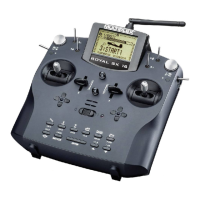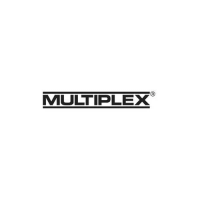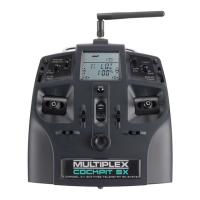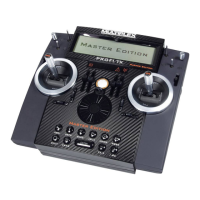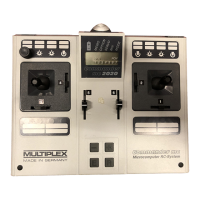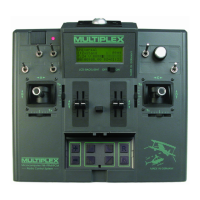Instructions
Page 89
• The mixer must be assigned to the appropriate
receiver outputs (è K Servo, Assignment).
• The inputs must be set up correctly, i.e. the magni-
tude and direction of the servo’s movements when
the input / transmitter control is operated
(è G Mixer).
5
1
' TIP:
For modellers familiar with the
PROFI mc 3000 and 4000:
The mixer inputs of the ROYALevo are now set at the
mixer, rather than at the servo end.
The advantage is this:
The inputs are set up at a single point (è 15.), rather
than at several points (servos). This makes the task of
setting up simpler and less time-consuming. It also
means that the setting of an input can be adjusted con-
veniently when the model is in flight, using a 3-D digi-
adjustor. Careful servo calibration (è 16.1.) is also im-
portant, otherwise you may find that multiple control
surfaces do not deflect by the same amount. This would
mean, for example, that a model being landed with the
ailerons deflected up would tend to turn to one side on
the final landing approach.
13.2.2. Defining mixers
Each mixer can be assigned its own name of your
choice. This is carried out in line 3 under Name
(è 10.1.3. text input).
The next step is to assign up to 5 mixer inputs (transmit-
ter controls) of your choice; this is done in lines 1 - 5.:
Col. 1 Mixer inputs (controls)
Aileron, elevator, rudder and throttle can be
assigned as required, with or without trim.
Example line 4: "Thr -Tr" = Throttle without trim
Col. 2
Mixer switch Mix-1, Mix-2 or Mix-3
Can be used to switch the corresponding input
on or off.
"----" means that the input is always active.
Col. 3 Mixer options (è 12.2.3.)
How is the input to take effect?
Which settings are to be available when you set
up the mixer?
Where is the neutral position of the control?
13.2.3. The mixer options
™
„Symmetrical“
Neutral position of control: Centre
one parameter: Travel
100%
-100%
-100%
100%
Control
travel
Servo travel
TrvTrv
š
„Asymmetrical“
Neutral position of control: Centre
two parameters: Travelñ and Travelò
100%
-100%
-100%
100%
Servo travel
Control
travel
œ
„Single-sided with curve“
Neutral position of control: End-point
two parameters: Point1 and point2
100%
-100%
-100%
100%
Control
travel
Servo travel
Pt2Pt2
Pt1Pt1
›-
„Single-sided/linear with dead zone“
Neutral position of control: End-point
two parameters: Dead zone and travel
100%
-100%
-100%
100%
Control
travel
Servo travel
TrvTrv
DeadDead
The control generates a
symmetrical movement
of the servo with vari-
able travel around the
servo centre
Application sample:
Input Aileron, Elev., Flap
in mixers like AILERON+,
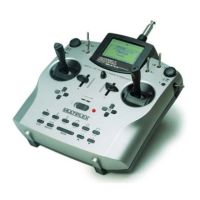
